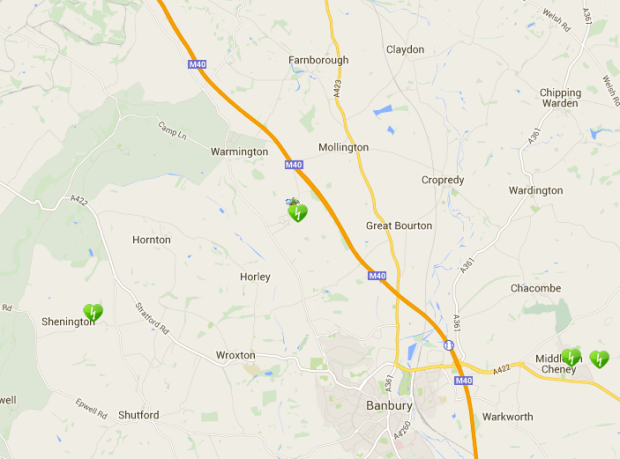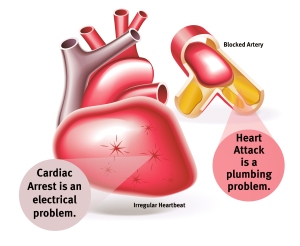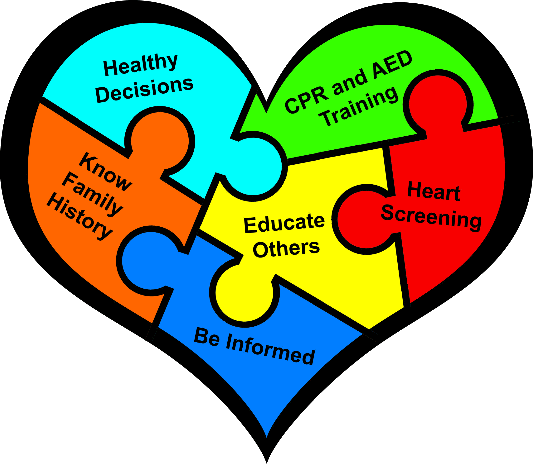Shotteswell Defibrillator AED
EMERGENCY DEFIBRILLATOR (AED) INSTRUCTIONS FOR USE
In the event of a suspected heart attack/chest pains, the following procedure should be used:
1. Call 999 and ask for the ambulance service.
2. When asked by the operator, please give the telephone number from where you are calling and the location of this cabinet, which is:
Cabinet No. 815
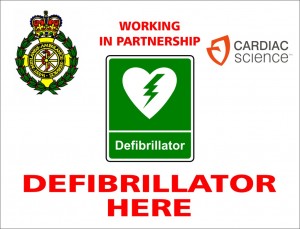 Shotteswell Village Hall
Shotteswell Village Hall
Banbury
Oxon
OX17 1JF
3. The operator will ask a series of questions which you will need to answer to the best of your ability. This will only take a few seconds and will not delay the ambulance.
4. The operator will then provide you with the access code to open the cabinet.
5. The defibrillator and resuscitation pack should be removed from the cabinet and the ambulance service will stay on the line and give verbal instruction if required.
6. Switch on the defibrillator and it will then provide you with verbal instructions for use.
7. The defibrillator cannot be used incorrectly as it will only deliver a shock to the patient if it detects it is necessary.
8. There are scissors in the resuscitation pack to assist with removal of clothing and a pocket rescue breath mask to carry out CPR.
Remember THINK safety.
Look around before pushing the button to shock and SHOUT the command STAND CLEAR SHOCKING and then check to make sure everyone is clear.
We are indebted to Rosemary Higham-Stevens for the donation of the defibrillator in memory of the late Richard Corbett, from Shotteswell.
Our thanks to the Big Lottery Fund, who donated funds towards the housing cabinet.
Please note that the Parish Council administers this scheme.
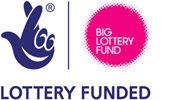
Defibrillator Location
Click on next link for the history of our defibrillator
Cardiac arrest
A cardiac arrest happens when your heart stops pumping blood around the body.
If you have a cardiac arrest, you lose consciousness almost at once.
There are also no other signs of life such as breathing or movement.
This is an emergency and if you witness a cardiac arrest you should call 999 immediately.
What is the difference between a heart attack and cardiac arrest?
A cardiac arrest is different from a heart attack.
- Most heart attacks are caused by coronary heart disease.
- If you have a heart attack, it does not always lead to a cardiac arrest.
- A cardiac arrest does not always happen because you have a heart condition.
If you witness a cardiac arrest, you can increase the person’s chances of survival by phoning 999 and giving immediate CPR.
Cardiopulmonary resuscitation (CPR)
Unless someone starts cardiopulmonary resuscitation (CPR) the person may suffer permanent damage to the brain and other organs.
CPR means:
- chest compression (pumping the heart by external cardiac massage), to keep the circulation going until the ambulance arrives and
- rescue breathing (inflating the lungs by using mouth-to-mouth resuscitation),
Ambulance staff are trained in advanced resuscitation and all emergency ambulances carry a defibrillator.
What causes a cardiac arrest?
The most common cause of a cardiac arrest is a life threatening abnormal heart rhythm called ventricular fibrillation (VF).
Ventricular fibrillation occurs when the electrical activity of the heart becomes so chaotic that the heart stops pumping and quivers or ‘fibrillates’ instead. There are various causes of VF. These include heart-related problems, such as:
- Coronary heart disease
- Heart attack
- Cardiomyopathy
- Congenital heart disease
- Heart valve disease
- Acute Myocarditis (inflammation of the heart muscle)
- Heart conduction disorders that make you more likely to experience abnormal heart rhythms, such as Long QT Syndrome
VF can also happen if:
- there is a lack of oxygen in your body – for example, if you are choking
- you are electrocuted
- you have used recreational drugs, such as cocaine or methadrone
- you lose a large amount of blood
VF can sometimes be corrected by giving an electric shock through the chest wall, using a device called a defibrillator.
Hands-Only CPR FAQs
If someone has suddenly collapsed, is not breathing normally and is unresponsive they are in cardiac arrest.
Calling 999 and pushing hard and fast in the centre of their chest to the beat of Stayin’ Alive by the Bee Gees until an ambulance arrives could help save their life.
They’re simple actions but you may still have some questions about Hands-only CPR.
Why are you advocating Hands-only CPR when you show how to give rescue breaths on Heartstart courses?
There are appalling survival rates from out-of-hospital cardiac arrests in the UK. Less than 10 per cent of casualties survive to leave hospital, and yet many cardiac arrests are witnessed by members of the public. We have to try and improve those survival rates while facing the reality that most people don’t know how to give cardiopulmonary resuscitation (CPR).
Research shows people are more likely to start CPR if they only have to carry out Hands-only CPR on a casualty. CPR with rescue breaths should remain the gold standard but if someone is untrained, or unsure about how to give rescue breaths and chest compressions, Hands-only CPR is still more likely to increase a casualty’s chance of survival.
So if you’ve been trained in CPR, including rescue breaths, and feel confident using your skills, you should still give chest compressions with rescue breaths.
What do you mean by ‘hard and fast’?
It’s been shown that chest compressions are often carried out at the wrong depth and speed so ‘hard and fast’ is a very simple message that lots of people will hopefully remember. ‘Hard’ means pushing on the chest to a depth of 5cm to 6cm, and ‘fast’ means 100-120 compressions a minute, roughly the same speed as Stayin’ Alive by the Bee Gees.
How does somebody know if they’re trained or untrained?
There are dozens of organisations all offering individuals the chance to learn the skills needed to save a life and some training doesn’t even take two hours to complete. If you’ve never had any training or refresher training in the last year you’ll probably be classed as untrained. If you’ve had training but still feel unable or unwilling to give rescue breaths, you should carry out Hands-only CPR.
When should I help?
If someone has collapsed, is not breathing normally and is not responsive to shaking and shouting then Hands-only CPR can increase their chances of survival prior to a defibrillator and professional help arriving.
In the first few minutes after cardiac arrest, the casualty may be barely breathing, or taking infrequent noisy gasps. This is called agonal breathing and must not be confused with normal breathing. If someone is unresponsive and their breathing is noisy, infrequent or doesn’t seem normal, start Hands-only CPR.
Is a cardiac arrest the same as a heart attack?
No. A cardiac arrest is totally different to a heart attack. A cardiac arrest is when your heart stops pumping blood around your body. You are unresponsive and won’t be breathing normally. Immediate CPR and defibrillation is needed to have any chance of survival.
Most heart attacks are caused by coronary heart disease, which is when one or more coronary arteries narrow due to a gradual build-up of fatty material within their walls. If this material becomes unstable, a piece may break off and lead to a blood clot forming. This clot can block a coronary artery, starving part of your heart of oxygen-carrying blood causing damage to your heart muscle – this is a heart attack.
Heart attacks cause the majority of cardiac arrests in the UK.
What are someone’s chances of surviving a cardiac arrest with or without bystander intervention?
At the moment, less than 10 per cent of the 30,000 people in the UK who have a cardiac arrest out of hospital each year survive long enough to leave hospital alive. If someone carries out early CPR, it may double a casualty’s chances of survival. Hands-only CPR should increase the number of bystander interventions and save lives.
Can you do Hands-only CPR on children or babies?
If you’ve not been taught how to give rescue breaths it’s far better to do Hands-only CPR on children than to do nothing. Children’s ribs are flexible so you’re very unlikely to cause damage.
Use two fingers for an infant under a year and one or two hands for a child over a year to make sure you compress the chest by about one third of its depth. If you’ve been taught how to give rescue breaths then these should be used to help children; give five rescue breaths before you start chest compressions, then give two rescue breaths after every 30 chest compressions.
How long should a rescuer do chest compressions for?
Rescuers should continue to deliver Hands-only CPR until professional help arrives and takes over, or they become exhausted. You can also stop chest compressions if the casualty shows signs of regaining consciousness, such as coughing, opening their eyes, speaking, moving purposefully, as well as breathing normally. Ideally, if there is more than one rescuer they should swap over every two minutes until a defibrillator arrives to prevent tiredness.
If a casualty has other injuries should a rescuer move them or turn them over to administer Hands-only CPR?
Cardiac arrest takes priority over anything else, so yes. If you don’t give Hands Only CPR then you are reducing the chance of the casualty surviving. It may seem a difficult decision but saving someone’s life takes priority over other injuries.
What if ambulance control tells me to do something more than Hands-only CPR when I call 999?
Rescuers should always listen to the ambulance operator as they will be best placed to tell you how to help properly. If you’re trained, the operator will probably talk you through CPR with rescue breaths but if not, they’ll probably guide you through Hands-only CPR.
Will a casualty come out of cardiac arrest if Hands-only CPR is performed correctly?
Chest compressions alone will only very rarely be able bring someone out of a cardiac arrest. Most of the time a defibrillator is needed to ‘shock’ the heart to allow a normal heart rhythm to return. Hands-only CPR will help keep some oxygenated blood going to the brain before a defibrillator arrives and is an important link in the chain of survival.
If a rescuer is risking their own health or safety, should they still carry out Hands-only CPR?
No. A bystander should never attempt any form of CPR if they are risking their own safety, whether they are trained or untrained. They should call 999 and then wait for help to arrive.
What is a defibrillator?
A defibrillator (sometimes also known as an Automated External Defibrillator or AED) is a life-saving machine that can give the heart a controlled electrical shock during a cardiac arrest.
Can you do Hands-only CPR for more than five minutes?
Hands-only CPR works best when an ambulance arrives within a few minutes. But even when help takes longer to arrive, Hands-only CPR is better than no CPR, so carry on until an ambulance arrives.
If someone is untrained, can’t they damage a casualty’s ribs doing Hands-only CPR?
Chest compressions should be carried out hard and fast for maximum effectiveness. That occasionally means a bystander could injure the casualty during the rescue, by bruising them or damaging a rib. However, chest compressions of 100-120 times a minute at a depth of 5cm to 6cm could help save the life of a casualty – a broken rib or bruising is a small price to pay.
Can somebody get sued if they do Hands-only CPR or CPR with rescue breaths?
No-one has ever been successfully sued in the UK for carrying out CPR. Without bystanders intervening by calling 999 or carrying out CPR there is a very small chance of someone surviving a cardiac arrest, so any CPR is better than no CPR. By simplifying the CPR message to hands only we hope to see more successful resuscitation attempts by bystanders.

